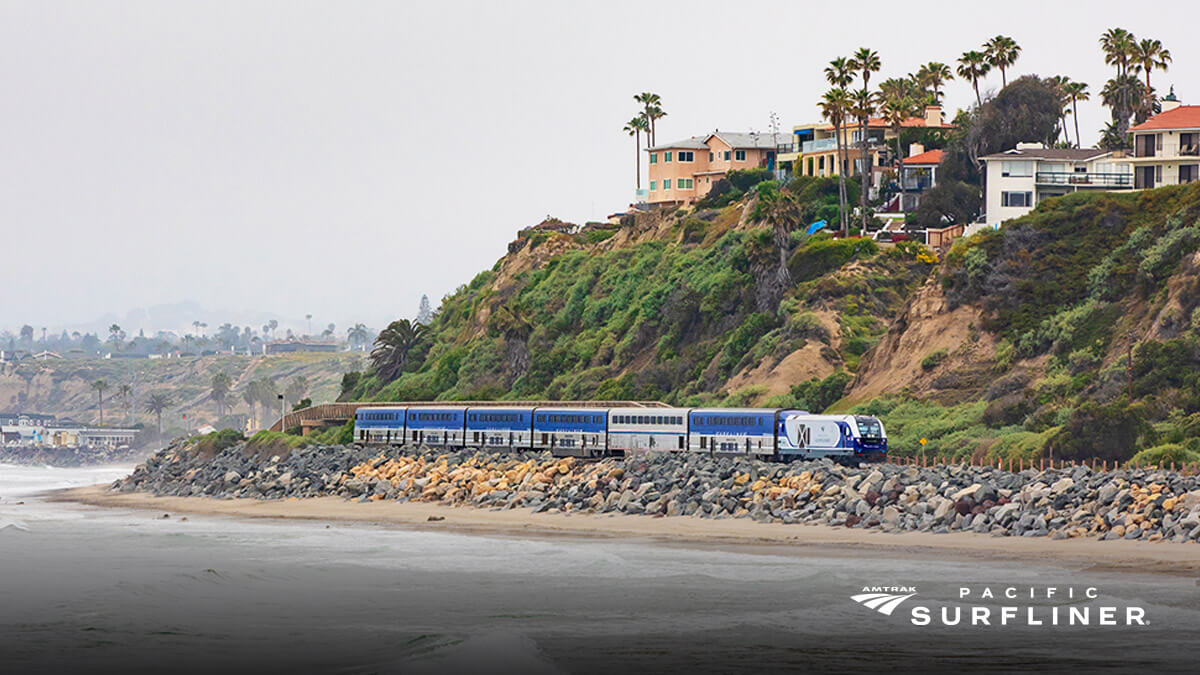The Los Angeles/San Diego/San Luis Obispo Rail Corridor - LOSSAN - runs 351 miles through six Southern California coastal counties and is the second busiest intercity passenger rail corridor in the United States. It serves as an important passenger connection for points between Santa Barbara and San Diego, and the route is also a key freight corridor, directly serving the ports of San Diego and Port Heuneme.
But its southern portion has been closed more than it's been open this year, as shifting cliffs threaten to come down on the tracks.
The legislature this year formed a subcommittee to discuss the considerable problems facing this crucial rail route, and today held a second hearing on the topic (the first was held in May).
No clear conclusions were reached about how to move forward. In a nutshell, the work to stabilize the cliffs above the railroad is done, and the route is open now for full service. Further threats from sea level rise and rain seepage will continue their inexorable work to erode the cliffs. And a very wide range of agencies and operators have some role in maintaining rails and service, and in planning future work - but there is no clear leader.
The Orange County Transportation Authority (OCTA), for example, just hired an engineering firm to study the issues and develop potentials solutions for safeguarding the existing rail service. But while OCTA staffs the managing agency for LOSSAN, it is only one of many players. It owns only about forty miles of the LOSSAN corridor's track - there are six other right-of-way owners, including freight companies. Rail operators on the route include freight companies as well as Metrolink, Amtrak, and the San Diego North County Transit.
Anyway, it's complicated. That was very clear at today's hearing, where legislators got an update on the work that's been done so far. Most of the emergency work over the last 23 months has been in response to landslides from properties owned by private individuals above the cliffs, and has ranged from building retaining walls to adding riprap and sand along the coast. Emergency funding from state and local sources - including more than $11 million from OCTA - helped get the work finished.
"One thing that became obvious," according to Darrell Johnson, CEO of OCTA, "is that the state has a very clear process for highway emergencies. This does not exist for publicly owned railroads." The California Transportation Commission had to declare an emergency to be able to hold meetings and allocate funds to deal with the repairs, but there isn't any one agency in charge of fixing the problems. Contrast that with the way Caltrans does such an amazing job of clearing traffic and making repairs after floods, landslides, heavy snow, and crashes on the highway system.
The disparity between state and local investments in car travel vs public transportation is painfully obvious.
San Diego Supervisor Foley urged the legislators to move quickly, both to protect the current rail route and to plan for longer-term solutions.
"The longer we take, the more expensive it becomes," she said. "We need more than the piecemeal, reactive planning that has taken place over last decade. My hope is that this committee will prioritize pulling everyone together towards a long-term planning process."
When Senator Josh Newman asked representatives from the Newsom administration, "Which state agency holds the lead on planning for this?" he was met with a momentary silence.
Chad Edison of the California State Transportation Agency told him, "It's a partnership." LOSSAN, Caltrans, and CalSTA all have roles. The California State Rail Plan would count as the state-level strategic plan, and that is also formulated through "a shared process," said Edison.
Chair Catherine Blakespear worried that a kind of Balkanization could take over, if there is no one to ultimately make the decisions. "It's a corridor, and hyperlocal concerns are only one aspect. It needs to function for the whole 351 miles," she said. "We have to make the case for our federal partners that we know what we're going to do and what effect its going to have, and we're not there yet," she said.
She urged OCTA to come up with some solid alternatives as part of its study. "To get real public participation, you need to propose something," she said. "Otherwise conversations happen in a world that is not grounded in reality. We need to be forward moving, not treading water."






